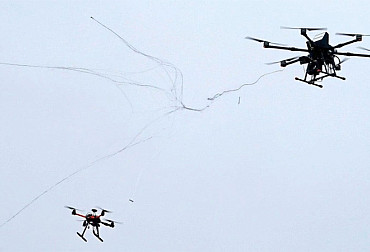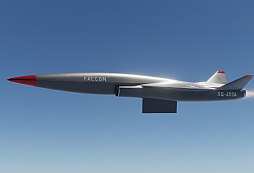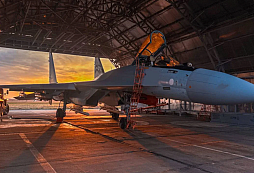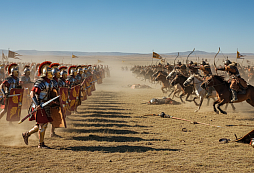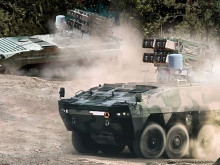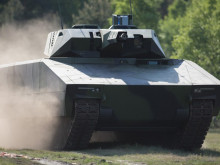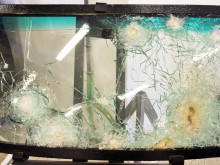Armoured vehicles are getting heavier. The bridge assets of the engineer army have to keep up with it
The Czech Army's modernisation projects also include the acquisition of escort bridges and pontoon bridge sets. The most modern BVP or main battle tank are not very useful if their movements are hindered by an otherwise insurmountable water obstacle. The army must take great care of its engineer assets. Their parameters and quantity must match operational requirements.
Both projects were generally introduced in mid-2018 shortly after General Opata took office as Chief of the General Staff. In the case of the escort bridge, it is a replacement of the existing AM-50 vehicles, i.e. a bridge vehicle, a vehicle equipped with support, laying and bulldozing equipment on a Tatra 815 8x8 chassis. The number 50 in the designation refers to the load capacity of one bridge span, i.e. 50 tonnes. This automatically brings us to one of the most important parameters of future vehicles of this type.
Requirements from 2018: MLC 70 and MLC 80
The 2018 General Staff material, in addition to the requirements for the vehicle platform, of which there should be twelve, such as ballistic protection (LEVEL 2 according to STANAG 4569), a cab providing protection against the effects of CBRN, in terms of the bridge, stipulated: the ability to bridge an obstacle with a width of at least 24 m using 2 bridge spans, a roadway width of 4 m and a minimum load capacity of MLC 70 (63.5 tons for tracked vehicles and 73 tons for wheeled vehicles). In the case of a pontoon bridge assembly, a minimum MLC of 80 (72,6 tonnes for tracked vehicles and 83,5 tonnes for wheeled vehicles) is required with a minimum bridge length of 150 m, and the possibility of assembling a seabed with the same minimum load capacity.
The reason for these parameters is quite obvious: it is the weight of the main battle tanks that predominate in the armament of our allies within the Alliance, i.e. the American M1 Abrams and Leopard 2 tanks, which are also already in the armament of the Czech Army (in the number of fourteen in the 2A4 version, which the Czech Republic received as a gift from Germany in the framework of the so-called circular exchange as compensation for the equipment provided to Ukraine). At the same time, the Ministry of Defence is negotiating the joint purchase of 2A8 Leopard 2 tanks with Germany and other countries. This is to include up to 77 vehicles in six variants. If the combat weight of the Leopard 2A4 tank is approximately 55 tonnes, the Leopard 2A8 will be 65-67 tonnes, and here the MLC 70 will no longer be sufficient.
Both the AM-50 and the Pontoon Bridge Vehicles (PMS), whose concept dates back to the 1960s, have long been unable to meet the Army's requirements in the context of NATO force deployment. It is not only modern tanks that are gaining weight, but armoured vehicles in general. The priority capabilities include, quite rightly, resilience with regard to the most highly valued lives and health of crews. Passive and active ballistic protection, as well as the need to equip vehicles with advanced weapon, communication and sensor systems, is not free in terms of vehicle weight. Even the combat version of the future CV9030 MkIV tracked BMP introduced into the armament of the 7th Mechanised Brigade will have an operating weight of nearly 40 tonnes. If the existing, for many years "unfortunately existing", ex-Soviet concept technology suits the existing bridge vehicles, in the future a drastic modernization is inevitable and crucial.
AM-70 EX as a possible solution for a companion bridge
Only modern MLC-70 and, more likely, MLC-80 standard assets can offer the capability of engineer support of troops in the area of movement and manoeuvre, and ensure freedom of movement in operations in the context of other modernisation projects of the Army, but also in the wider alliance context. Among the Czech solutions in this respect is the promising AM-70 EX vehicle developed by the Sternberg-based Excalibur Army and presented four years ago at IDET in Brno. EA's Business Development Director Pavel Doško told us: "For Czech engineers, the transition to the AM-70 EX would be very easy. The operating principles of the bridge that they are used to are preserved. But the whole solution is also in many ways a generational leap to the present. The main change is, of course, the new Tatra Force 8x8 chassis, but also the modern control system with automated bridge laying elements, modern electronics, hydraulics or the new maintenance system."
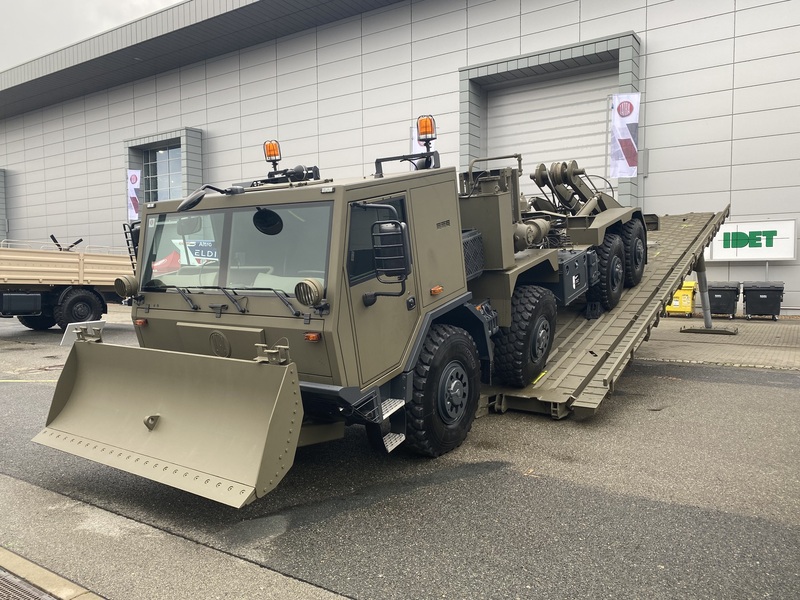
Leguan bridge tank and Leguan on wheeled platform
Specifically for the needs of a tank battalion, probably re-equipped in the future with Leopard 2A8 vehicles, but probably a Leguan vehicle. Six variants of the Leopard 2A8 main battle tank have been mentioned, and the Leguan as a bridge tank on this platform is automatically offered. This is because the Leguan allows for the mobility of the Leopard 2 main battle tank, and with it, the most consistent operation and maintenance logistics. Its 14 m and 26 m long bridges meet the strictest load capacity requirements of MLC 80 (the vehicle itself falls into the MLC 70 category), and by definition of its concept it is directly designed to ensure the mobility of Leopard 2 main battle tanks. Along with this, it offers high-performance protection concepts and a number of other equipment features such as a cooling system, auxiliary power generator, etc. Its bridge can be adapted to virtually all heavy tracked vehicle chassis. It features a modular concept, making it versatile and expandable.
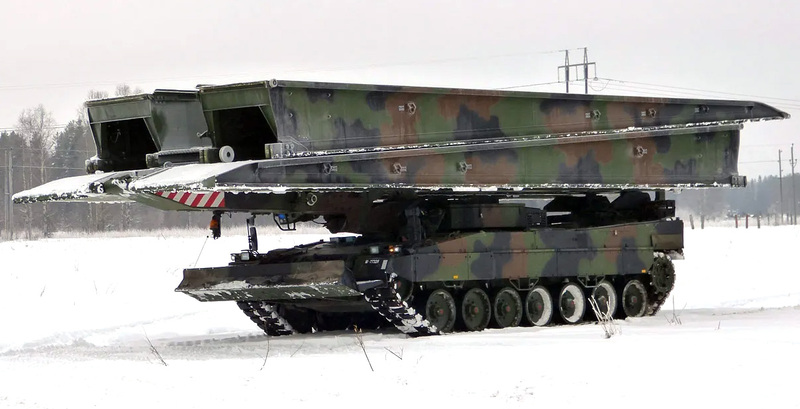
However, the Leguan tank's bridge system also has applications for a wheeled chassis, which allows us to arrive at a solution that combines the advantages of a wheeled platform and its mobility with an MLC 80 load capacity that is sufficient for the most advanced main battle tanks with a margin. Needless to say, Czech industry can provide the military with the established and proven Tatra 8x8 wheeled platforms and larger, including the required armoured cabs.
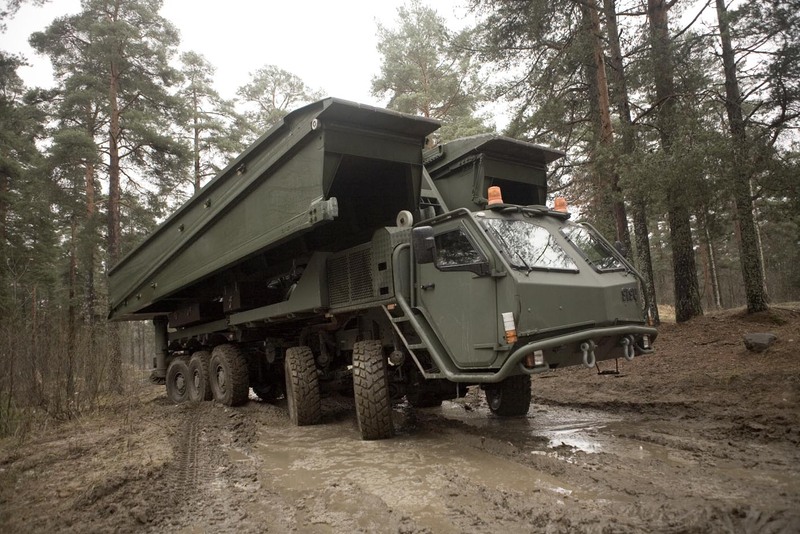
Several options are available, including a bridge system towed in a trailer. Considering the mentioned future rearmament of the 73rd Tank Battalion with Leopard 2A8 tanks and the trends in the field of increasing weight of armoured vehicles, it is easy to speculate that such a solution will definitely interest the Czech Army.
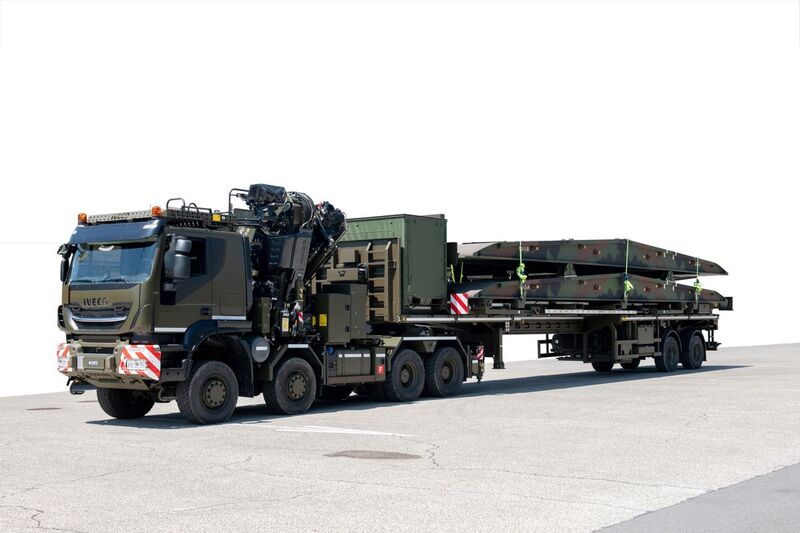
IRB pontoon and M3 amphibious vehicle
In the field of pontoon rigs, some time ago the Sternberg-based Excalibur Army together with General Dynamics European Land Systems (GDELS) Corporation presented a solution in the form of the IRB pontoon bridge rig on the Tatra 815-7 Force chassis, which for tracked vehicles falls into the MLC 80 category exactly as the army requires.
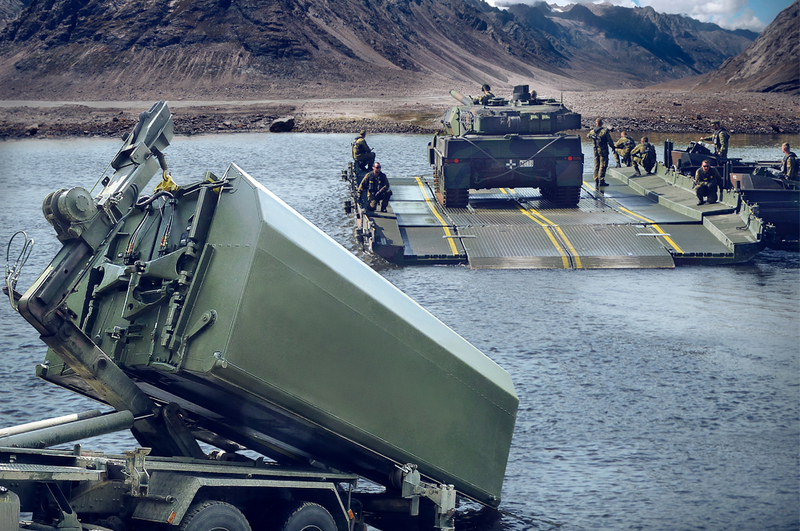
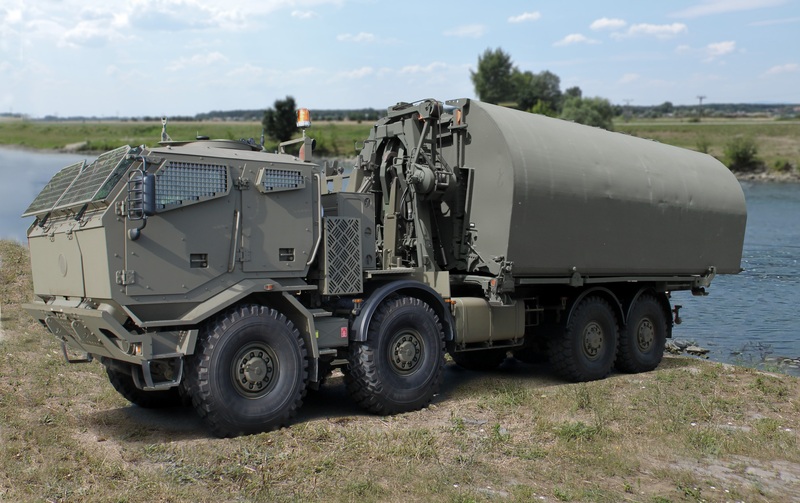
The existing PMS kits, now forty years old, fit the MLC 60 category, again: fully compliant with the existing armament in the form of T-72 tanks and BVP-2 armoured personnel carriers; but insufficient for modern main battle tanks: for the Czech Army ground troops as a whole, the IRB system would primarily remove the tactical and operational limitations of the currently used engineer bridge systems. They do not have sufficient load capacity for the new equipment that the army will acquire in the coming years, nor do they meet NATO requirements and standards. However, the IRB represents a conceptually very similar solution to the PMS kit.
The M3 bridge system, developed by GDELS, is a remarkable triple combination of land vehicle, vessel and self-propelled pontoon. The M3 can be described as the most advanced and fastest deployable amphibious bridge and ferry system of today. It offers high mobility, accessibility and seamless transition from land to water and can be operated by a crew of only two soldiers. The increased level of automation of the system thus ensures low operating costs. Used as a bridge or as a floating raft, the M3 can carry a load of up to MLC 85, and can therefore carry all types of main battle tanks with reserve, including the latest versions of the Leopard 2, M1 Abrams or Challenger 2, and of course the lighter K2 Black Panther.

Construction Concept of the Czech Army 2030 mentions the acquisition of new engineer assets in this area in its 2025 milestone. Construction Concept of the Czech Army 2035 confirms this requirement. The table of the renewal of the main equipment of the ground forces mentions the acquisition of modern floating and escort bridges in 2025-2028. If both projects can be implemented, the engineer troops will be well prepared for the arrival of heavy modern tanks.
















